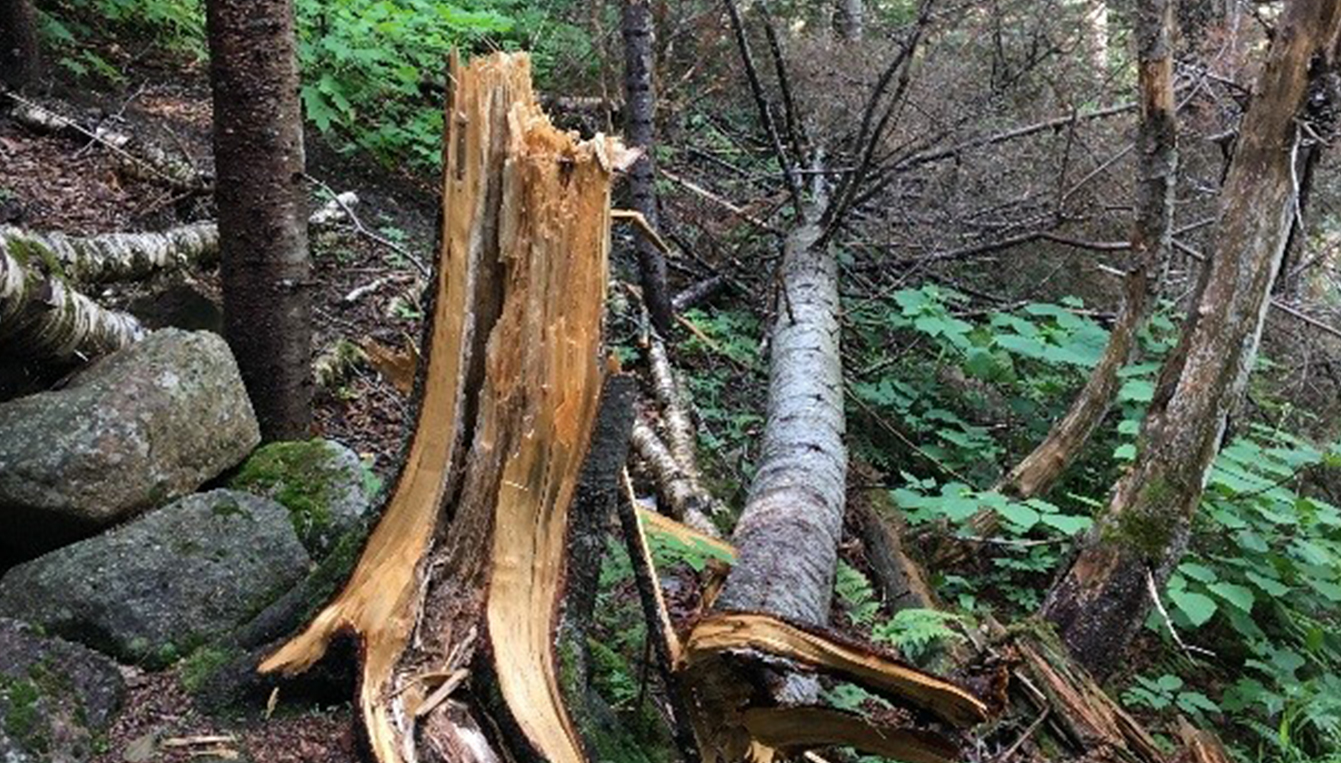Michael Bahtiarian
Energy, Environmental, Transportation |
Market Leader
Principal

When a tree falls in the woods and there is no one there to hear it, does it make a sound? Well, yes and no, but does it still apply if the “tree” is in the Commonwealth of Massachusetts? This blog issue is dedicated to our State’s noise code. A couple of months ago, I was invited by the Environmental Business Council (EBC) of New England to address that topic. I should thank Mr. Mike Feinblatt of the ESS Group for the invite, and fellow speakers, Attorney Dan Bailey of Pierce Atwood and Mr. Joseph Dufresne of Saint Gobain Abrasives for sharing the podium.
Yes, a tree falling in the Minuteman Historic Park in Concord, MA may cause “noise” because Massachusetts has a noise regulation. Formally, the State’s noise code is found in 310 CMR 7.10. This is a citation to the Code of Massachusetts Regulations (or CMR’s). It simply says, “No person owning, leasing, or controlling a source of sound shall willfully, negligently, or through failure to provide necessary equipment, service, or maintenance or to take necessary precautions cause, suffer, allow, or permit unnecessary emissions from said source of sound that may cause noise.” In other words, the law stipulated certain sources of sound cannot cause noise. If you read my first blog, I defined “noise” as unwanted sound. Still, not a comprehensive definition from a legal standpoint.
The law goes on to state that it applies to preventable industrial and commercial sources of sound, and sound of burglar alarms, construction/demolition equipment. It further exempts parades, public gatherings, sporting events, emergency vehicles and domestic equipment such as lawn mowers and power saws (but only between 7am and 9pm). So, if there is someone there to witness it, that tree falling in Minuteman Historic Park could be a noise violation, but the annual Patriots Day Reenactment (if considered a parade) may not.
There you have it…the state law says sources of sound cannot create noise! But what is then defined as noise? The official answer came on February 1, 1990 in the form of a policy statement by the Commonwealth of Massachusetts Executive Office of Environmental Quality, Division of Air Quality Control. The official policy says:
A source of sound will be considered to be violating the Department’s noise regulation (310 CRM 7.10) if the source:
1. Increases the broadband sound level by more than 10 dB(A) above the ambient, or
2. Produces a “pure tone” condition – when any octave band center frequency sound pressure level exceeds the two adjacent center frequency sound pressure levels by 3 decibels or more.
These criteria are measured both at the property line and at the nearest inhabited residence. Ambient is defined as the background A-weighted sound (pressure) level that is exceeded 90% of the time measured during equipment operating hours. The ambient may also be establish by other means with the consent of the Department.
This policy says a good deal, but it still leaves a lot up for debate. Let us start with what is actually said. Since 1990 noise in the Commonwealth occurs for either of two conditions: sound from a source that causes an increase of 10 dB above the ambient or background sound, or if the sound produces what is referred to as a “pure tone.” The terms ambient and background sound are generally used interchangeably in the context of this policy. Basically, ambient or background sound is the sound pressure level produced by everything else excluding the source of sound being evaluated. This would include mechanical equipment on other buildings, highways, local street traffic, and environmental sounds such as wind, birds, insects, and frogs. The latter two, especially insects and spring peepers, generate considerable sound levels in the spring and summer. Also, in simple terms a pure tone is a sound with energy concentrated at one frequency. Examples include brake or bearing squeal, finger nails on a chalkboard, and some alarms. I will get more into pure tones in a subsequent blog.
How do you evaluate a source of noise, say a factory, for compliance with the MassDEP noise regulations? Looking at the above guideline, there is no detailed methodology provided by the MassDEP. I can tell you that my acoustical consulting colleagues have done it many different ways and we even held a meeting of the Greater Boston Chapter of Acoustical Society of America (GBASA) on this topic. The methods will largely depend on the noise source and the environment and on the individual doing the evaluation.
What do we know from the MassDEP Noise Pollution Policy Interpretation for determining the overall A-weighted sound level for the ambient background conditions is the following: You will need to measure the ambient during equipment operating hours but without the contribution of all sources under control of the noise source owner. You will need to use an instrument that can compute the ninetieth percentile of the A-weighted sound level, or L90 for short, or be able to estimate the background ambient L90 by appropriate sampling and observation.
For those of us “in-the-business” here are the rest of the things we would like specified:
One of the most important missing parameters from the MassDEP guideline is the length of time for any sound survey. Getting a bit more granular and in consideration of the new logging sound level meters, it would be great if the MassDEP specified the duration, sampling period and compilation method. Having had to do these surveys, I certainly have answers to the above questions. I presented my approaches at the EBC meeting back in March and I am happy to provide a copy of my PowerPoint slides upon request via this blog or my email. However, what are others to do? And what if we are all not doing the same thing?